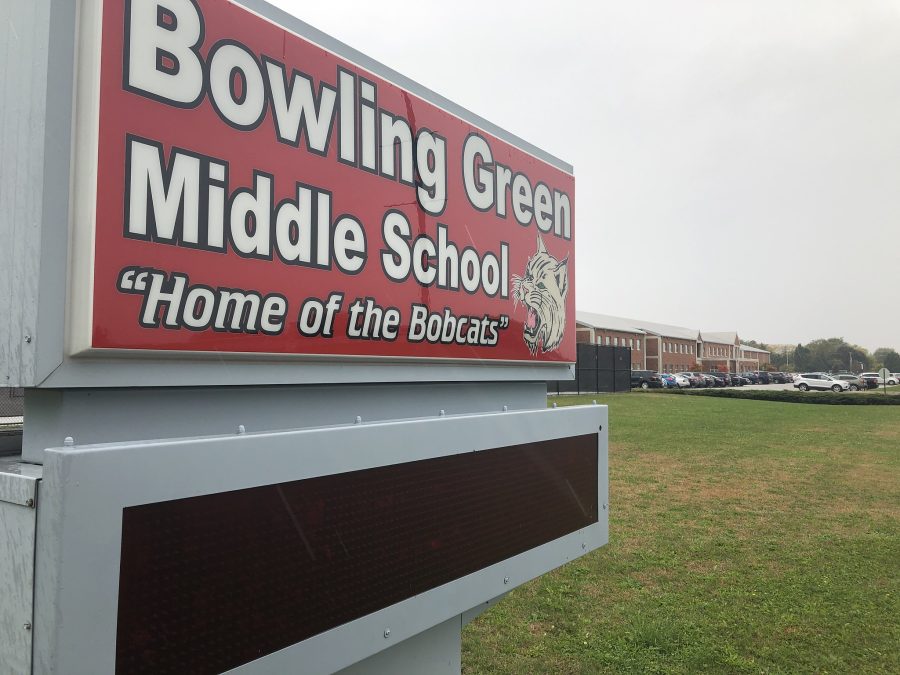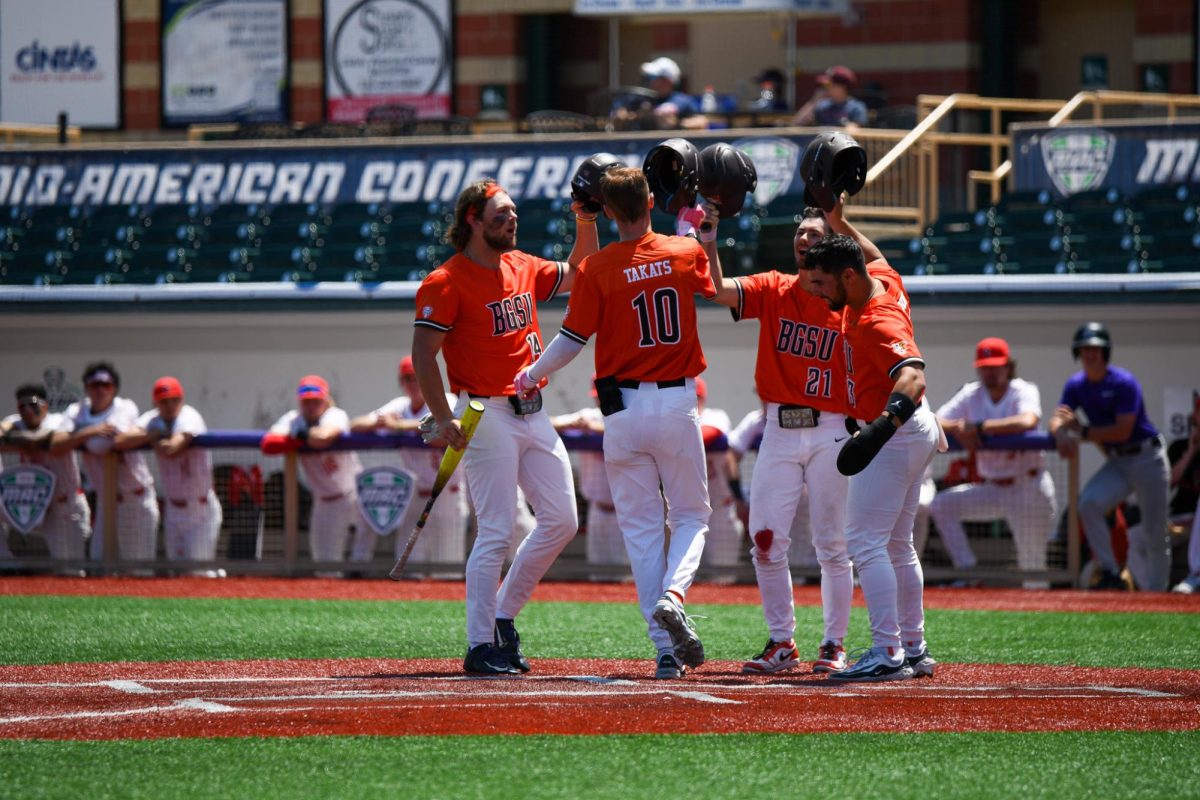A seemingly docile cow stands in a milking facility alongside 920 of her fellow bovines at Reyskens Dairy on Cygnet Road in Wood County.
Little does that cow know the controversy swirling around it and the farm it lives in, with people arguing about environmental and ethical impacts of Concentrated Animal Feeding Operations.
CAFOs are farms with hundreds or thousands of animals, distinguishing them from smaller farms. While most are run by local families, the farms are usually owned by corporations.
Vicky Askins is the treasurer for Wood County Citizens Opposed to Factory Farms, a group that criticizes CAFOs and encourages local residents to take up the issue as well.
Last week, Askins went to a roundtable discussion of CAFOs, which they call “factory farms,” last month at St. Thomas More Parish.
The large numbers of animals in CAFOs give off large amounts of liquid manure, which seeps into nearby water supplies, Askins said.
“Studies show people living near a CAFO are three times more likely to have a polluted well,” she said.
The health risks posed by standing manure include E. coli, Listeria, Salmonella and other organisms capable of causing disease in humans, according to materials distributed by WCCOFF.
The materials also give detail on environmental pollutants found in bovine waste, such as phosphorus and nitrogen entering the water – chemicals that are toxic to fish.
The manure additionally releases hydrogen sulfide, which could cause brain damage in humans, according to the New York Department of Health’s Web site.
But no evidence exists that the CAFOs in Wood County actually pollute their surrounding water sources, said Ohio state Senator Larry Mumper, who heads up the Senate’s Agricultural Committee.
“If WCCOFF has some research to bring before my committee I think they would,” Mumper said. “I’d look into the science behind it.”
According to a report published in 2003 by the Ohio Environmental Council, one fish dies of contaminants every week in Ohio.
Holly Myers-Jones, director of environmental studies at the University, said the fish die due to lack of oxygen in the water.
“The cows, chickens, hogs produce manure 365 days a year,” Myers-Jones said. “You should not put manure down when the ground is frozen because it’ll run off to the rivers and streams.”
But Senator Mumper maintains that no CAFO in Ohio operates outside of EPA regulations.
“The majority of [manure] comes from family farms,” he said.
The materials distributed by WCCOFF at the roundtable said the four factory farms proposed for operation in Wood County – two of them already operational – will produce more than five million pounds of waste each week.
Bigger threats CAFOs may pose threats with more widespread effects than those in Wood County.
The close proximity the animals live in leaves them prone to disease, Myers-Jones said, which CAFOs combat with preventive injections of antibiotics.
“Just as you use a condom to prevent pregnancy, antibiotics are used to prevent disease,” she said.
But those preventive measures are used too often on people, animals and plants, she said, resulting in super diseases – germs that have developed an immunity to all currently-known antibiotics.
“You have the world moving to just a couple kinds of chickens, a couple kinds of cows, a couple kinds of cattle,” Myers-Jones said. “If a new disease emerges and the antibiotics don’t work ” we could lose our milk supply in a matter of months.”
CAFOs also present the threat of their manure lagoons – pools that are dug out to store the hundreds of gallons of liquid manure created by the farms’ animals each day – spilling over and polluting water supplies.
But, Myers-Jones said, CAFOs pay more attention to manure management than smaller “family” farmers.
“I like to see it as like a nuclear power plant: We know they have a huge chance of massive, widespread destruction,” she said – while coal plants don’t risk such a huge disaster, more of them are needed to create the power of a single nuclear plant, and they still create air pollution.
“We have a bunch of small plants or one large one,” she said. “The question is, what’s the scale of the impact?”
Mumper said moving from smaller farms to CAFOs is a natural progression seen in other businesses such as the emergence of Wal-Mart.
“It’s no longer economical to have little hardware stores,” Mumper said. “I suspect at the end of the day, that’s the direction we’re all going to end up going.”
Myers-Jones agrees with Mumper.
“Every industry is moving towards centralization,” Myers-Jones said. “[But] like anything, there are pros and cons.”
As Americans consume more space per capita and want more parks and shopping malls, she said, anything that conserves that space – like a CAFO with its animals living in close proximity to each other – is environmentally sound.
Another advantage to CAFOs over smaller farms is the ability to produce cheaper meat.
“Americans love to eat meat,” she said. “Our lifestyle is dependent on getting cheap meat.”
Joe Catalano, 60, who attended the roundtable discussion at St. Thomas More, said he is wary of how CAFOs handle animals’ manure.
“When I was growing up, I wasn’t a farmer but I worked on a neighboring farm and one of the things [I learned] was natural fertilizer is superior to what you buy in the stores,” he said. “I think this is a case of ‘too much of a good thing is a bad thing.'”


















